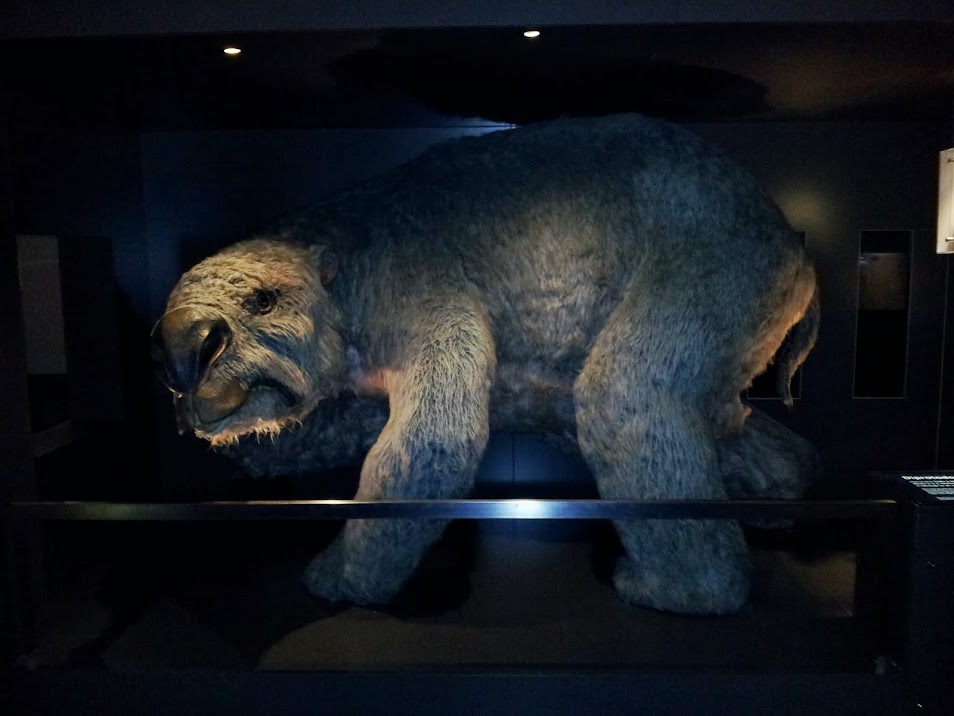Australian Megafauna
A second academic controversy surrounds the fate of the Australian megafauna.
Across the planet in Europe, Asia and the Americas the arrival of modern humans coincides with species extinction. In Australia megafauna disappeared between 40 thousand and 50 thousand years ago. In the Americas this coincides with the arrival of modern man about 13 thousand years ago. The hairy mammoth died out about 4 thousand years ago after long and well documented human predation extending over thousands of years. That the extinction of the megafauna in New Zealand was due to human predation is incontrovertible. There is recent evidence that giant Moa were driven to extinction within 150 years of Māori settlement less than 1 thousand years ago. When we were in Malta we saw evidence of the Pygmy Elephants that died out in various Mediterranean sites soon after human settlement.
There is still academic debate about the role that humans played in these extinctions in Australia, because, amongst other things, if the longest timeline is correct, humans must have coexisted with these animals for tens of thousands of years before they became extinct.
 Diprotodon - Extinct 25,000 years ago |
 Marsupial lion - Extinct 30,000 years ago |
|
|
|
|
Exhibits in the Australian Museum, Sydney |
|
More recently the arrival of dogs in Australia clearly coincides with new extinctions. In particular the previous top predator the Thylacine (Tasmanian tiger) finally became extinct in mainland Australia around the time of the Roman conquests, probably due to the arrival of the dingo. Its image can still be seen in rock art near Darwin indicating that some of this art is at least two thousand years old.
Rock Art Thylacine
The Thylacine became extinct in Tasmania in the 20th century; after dogs (and a head bounty) were introduced by Europeans in the 18th century.
The human introduction of rabbits and cats has done untold damage to other species; and another wave of native wildlife extinctions, and threatened extinctions, is now being suffered due to the introduction of the Cane Toad to Queensland in 1935.
Update - see also 2017 updade (appended below):
Recent discoveries have further confirmed human mega-fauna interactions.
A paper recently published in Nature by Hamm, G., Mitchell, P., Arnold, L. et al. Cultural innovation and megafauna interaction in the early settlement of arid Australia (Nature 539, 280–283, 2016).
The Abstract stated, in part:
"Elucidating the material culture of early people in arid Australia and the nature of their environmental interactions is essential for understanding the adaptability of populations and the potential causes of megafaunal extinctions 50–40 thousand years ago."
"Here we present evidence from Warratyi rock shelter in the southern interior that shows that humans occupied arid Australia by around 49 thousand years ago. The site preserves the only reliably dated, stratified evidence of extinct Australian megafauna including the giant marsupial Diprotodon optatum, alongside artefacts more than 46 thousand years ago old. We also report on the earliest-known use of ochre in Australia and Southeast Asia (at or before 49–46 thousand years ago), gypsum pigment (40–33 thousand years ago), bone tools (40–38 thousand years ago), hafted tools (38–35 thousand years ago), and backed artefacts (30–24 thousand years ago). Thus, our evidence shows that people not only settled in the arid interior within a few millennia of entering the continent, but also developed key technologies much earlier than previously recorded for Australia and Southeast Asia."


